Ode to the Mun River
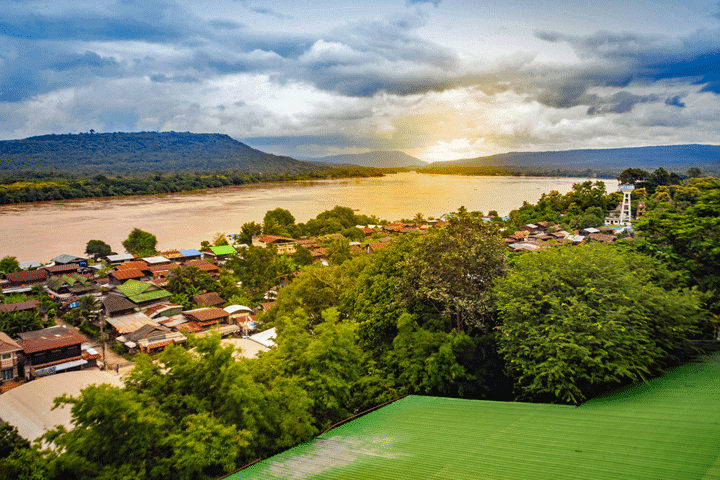
Mun River
When we got in Isaan came to live, we baptized our home Rim Mae Nam ie Riverside. And that was no coincidence because the Mun River which here forms the provincial border between Buriram (right bank) and Surin (left bank).
Everyone knows the mighty Chao Phraya or the lovely Ping that flow through Bangkok and Chiang Mai respectively, but the Mun is an unknown Thai waterway for many. However, the importance of the Mun should not be underestimated.
The Mun originates from the source area of the Khao Yai National Park, not far from Nakhon Ratchasima. With a length of 673 kilometers, the Mun is the longest river in Thailand. The much more famous Chao Phraya is often wrongly presented as the longest Thai river, but its course, between the confluence of the Ping and Nan at Nakhon Sawan and the mouth in the Gulf of Thailand, is exactly 370 kilometers. The Mun crosses the Khorat plateau and has left its mark on it, shaped it. It is the lifeline of many of the southern Isan provinces before it flows into the Mekong at Kanthararom (Sisaket). It is high time to sing the praises of this vital waterway for Northeast Thailand in more ways than one.
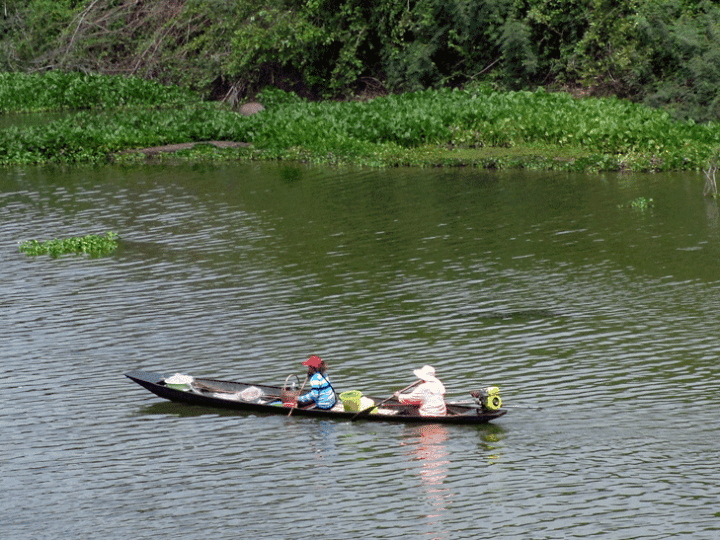
Historians believe that the Mun played an absolute key role in opening up northeastern and central Thailand and that the first traces of human activity in the basin of this river may be 15.000 years old. It is certain that settlements in the form of ringforts already existed in the Bronze Age, as was recently confirmed by extensive archaeological excavations in Ban Non Wat. Settlements, which incidentally bear a striking resemblance to those found around the Mekong and in the plain of Siem Reap, and which support the theory that pioneers from South China via the Mekong and the Mun brought this region into cultivation during this period.
As mentioned, our house is on the Mun. Squeezed between an ever-narrowing sand path that disappears like a trickle of sweat into the butt crack of the jungle and the almost futuristic-looking towpath that was only completed a few months ago, which was built from the center of Satuek. I admit that I can't get enough of the ever-changing and titillating spectacle that the Mun offers me daily and completely free of charge. You just never get tired of it. There's nothing like a brisk morning walk along the Mun, when the first hesitant rays of the sun pierce the wisps of mist and the gently rippling surface of the water carries the mystical sounds of praying monks from afar. In your nose the fresh, almost metallic smell of the sloshing water, in your ears the bubbling chug of an early fishing boat and above your head the Montagu's harriers slowly floating in magical circles and that one solitary majestic osprey, looking for their breakfast.
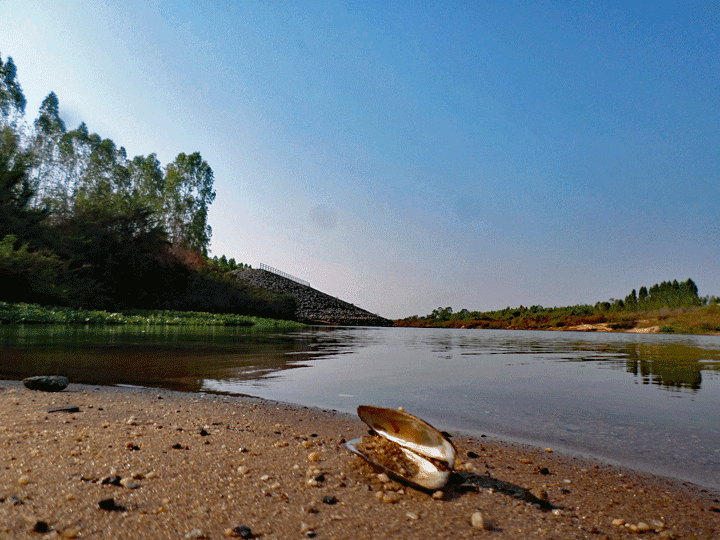
The deep appeblue seagreen water that, due to the play of light, suddenly transforms after a heavy downpour into something I would best describe as cappuccino brown. The elongated shadows of a pair of cranes flying over on their way to China. The fish that pop up at dusk in a rainbow of splashing drops and draw slow expanding concentric circles on the mirror-smooth water. The colorful brilliance of a Kingfisher emerging from the water in a dazzling flash. Ears ringing in the middle of the night after the hellish cacophony of howler and other frogs, stimulated by a heavy rain shower.
The particularly beautiful jogger on the towpath who takes all men's breath away every Friday evening. The splashing of neighbors who in the morning, for lack of a bathroom, descend the steps along the towpath to wash away sleep. The hundreds of clattering storks that nestle in the broad reeds for a few days at the end of January. The silhouette of a fisherman, silhouetted in the dim light of the setting sun, who, patiently searching for prey, casts his net on the bow of his slender boat with precision that is the result of years of experience. The same setting sun that sometimes gives the water of the Mun a deep purple shine, a regal color for a regal stream…. The rhythmic, almost staccato encouragements with which the rowers whip each other up when they train intensively in late autumn for the colorful and often quite exciting 'Long Boat Festival'. A dusty bunch of buffaloes with massive horns cooling off in the muddy floodplains…. I could go on and on…
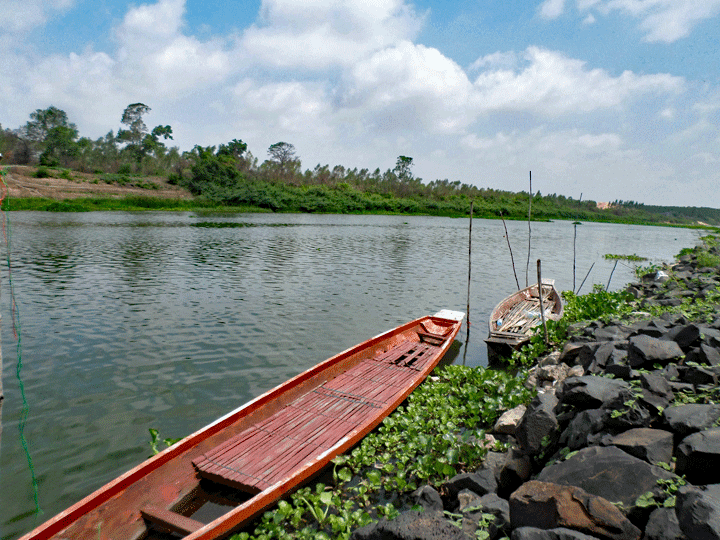
Ever-on-the-go, Mun commands respect, and not only when menacing, lead-grey clouds collide above her into a fist of steel that whips up her swirling waves with silver crests. Myths have been born on its mighty, history-laden shores, but it is itself legendary. She gives herself and her life force unceasingly, without calling the land and its inhabitants to account. A precious, silver-grey ribbon that gives new life to the barren red-brown earth of Isaan over and over again. Millions are dependent on her in one way or another, but also connected.
Just ask the fishermen in our hamlet, where almost half the population lives off the river's produce. And who sincerely thank her every day for what she, in all her generosity, gives so generously. And not just them, because at least three times a week Lung Jan and his faithful Catalan sheepdog Sam travel along the towpath to the fish trap that he has set out in a fairytale bay… Sam himself does not like his biweekly bath and hates the lavishly used anti- flea shampoo but you don't have to ask him twice for a swim in the Mun… He can spend hours floundering there, hunting for mussels or crayfish or just dead still, with only his head above the water, cooling off after a long walk.
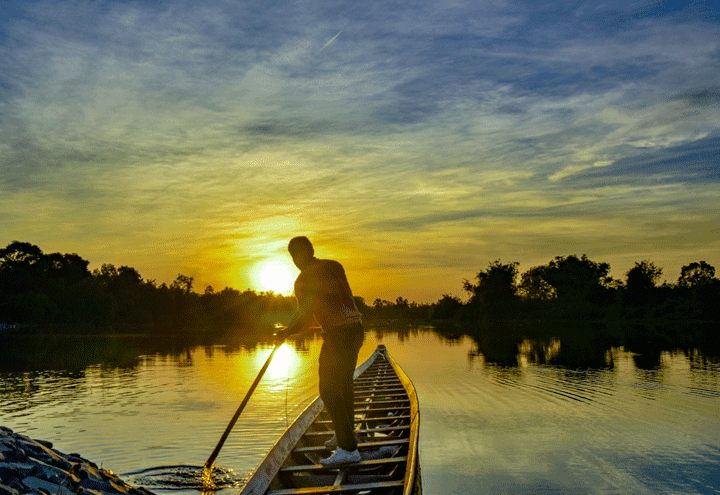
In the dry season, when the Copper Ploert burns mercilessly and scorchingly, the increasingly languid Mun silts up and I see, as if by magic, sandbars and islets appear before my nose, which in wetter periods are part of the invisible and elusive geography of this place. A paradise for all kinds of birds that traverse the salty mud on their long stilts in search of something tasty. The water meanders more and more slowly between these suddenly appearing obstacles until time seems to stand still. The heat of Isaan seems to be even too much for her lifeline for a moment. Until the monsoon beats the parched land with merciless downpours and once again covers the quasi-parched bed of the Mun with a damp mantle. The cycle of life resumes and green in a hundred shades in no time recaptures the barren banks and whimsically meandering the Mun again greedily stretches her flowing fingers to the surrounding land.
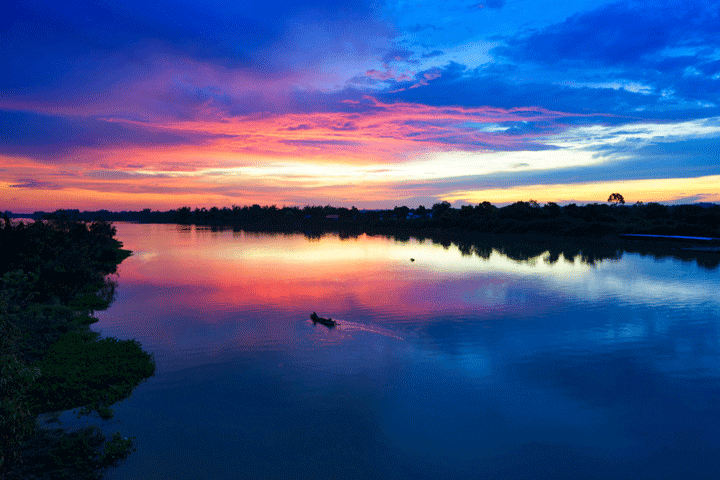
But of course I am not naive: the Mun is not only an idyllic picture, far from it. She can also be ruthless at times. She not only gives life but also takes it. Its shores are not always welcoming and harbor dark secrets. If people try to tame her roughly and without much respect and try to channel her energy as with the controversial Pak Mun Dam, then this will not go without a fight, but there is - fortunately - one more certainty: De Mun will still centuries on the road when we are long gone…


A wonderful story, Lung Jan, I would almost become jealous of your home!
Nice story, Lung Jan. Glad you can enjoy it so much. I always thought the Chi River was the longest, but it is indeed the Mun (pronounced moen, long -oe- and mean tone). Your last comment is correct and deserves more attention, quote:
'If people try to tame her harshly and without much respect and try to channel her energy as with the controversial Pak Mun Dam, then this will not go without a fight, but there is - fortunately - one more certainty:'
That Pak Mun dam has reduced fish stocks, both in species and numbers, by up to 80%, and has also been fatal for the farmers' water management. It has been protested against by the 'Assembly of the Poor' from the design stage in 1990 without result. The electricity generated from the dam also remains well below predicted capacity. Dams are often ecological disasters over which the local population has no influence whatsoever. Shame.
https://www.thailandblog.nl/achtergrond/protestbewegingen-thailand-the-assembly-the-poor/
Very nice. described almost lyrically.
The Mekong River with its water management by the Chinese, among others, is also an international problem!
One cannot unilaterally build dams without the other countries, which are also dependent
of the Mekong, be hindered by it! Fishing and water transport.
This leads to international tensions.
Beautifully written Jan.
We built a house in Ban Sa-Oeng (Tha Tum, Surin) near the Mun river with its small delta belonging to the village. It's just beautiful! Not a day goes by that I don't spend a while there and several times a week I dare to get up earlier to see the sunrise.
I can assure you that the tranquility and peace of it simply takes possession of you and that you become one with nature, so to speak. The rising sun, the birds and the few fishermen who silently navigate through the decor with their boats keep you from feeling like you're in a painting.
The river is undeniably the lifeline that provides an abundance of fish and water for the irrigation of the immense rice fields and fruit and vegetable cultivation.
We are not there all the time, but when we are there you can fully enjoy the surroundings!
Well told Lung Jan. Unfortunately I don't live on the banks of the Mun (although close by) but you can't have everything in life.
The Mun does indeed flow into the Mekong, but after the province of Sisaket, the province of Ubon is also crossed before merging on the border with Laos.
Indeed in Kong Chiam to be precise.
Yes indeed a beautiful story. This beauty of a river deserves it! I was in Ubon and Khong Chiam and enjoyed this beautiful river every day. The two-color point (at the intersection with the Mekong) receives many visitors, but it is difficult to find the difference in color between the two rivers. But I have often eaten by the water (or drank coffee) with the hills of Laos. In December, much had already been restored after the floods in September... Met cannot be easily chased away and many houses have been rebuilt on stilts with the car and a lot of junk under the carport. Despite the floods, waterfront land prices in Ubon are shockingly high! But then you also have something.
Very well described and what beautiful photos.
Thank you and keep enjoying
Flowery description, Lung Jan. Very poetic, but beautiful.
In any case, it shows that your heart beats for Thailand in a real way.
I also found your mention of the boat races striking.
I regularly experience the same thing, but then at the Mun in Phimai
where the river meets the Lamjakarat.
There are also international boat races every year in October-November.
And the rowers who live on site train for six months.
Then I hear the mate's rhythmic shouting, as you describe it.
Incidentally, I recently published in a blog site that is friends with Thailandblog,
which I ws here. not to mention by name,
a story in which those rowing boat races play a small role.
The short story is called 'The tigers of Phimai'. In three parts.
The rowboats appear in part 1.
Fantastically written and I still enjoy it!!
Just got back in Ned from my stay in Ubon a week ago and hardly a day goes by that I don't cycle over or along the Mun.
Often I hum the song of Andy Williams, already 60 years old, “Moon River”
It is remarkable that there are only two cities along the long Mun: Ubon Ratchatani and Pimai. However, the last city with the beautiful Khmer temple seems to be located with its back to the River.
Ten kilometers before the town of Ubon Ratchatani is Hat Khu Dua: a sandy beach on a very sharp bend in Mun. Three kilometers before the beach there are a few trendy restaurants with terraces on the river. The ordinary Thai goes to one of the simple restaurants on elongated platforms in the river. There is a long line. The guests get their own shelter. On Sunday afternoon the popular outing for city residents to enjoy Koeng Ten (dancing shrimp). The mix of live large and small shrimps is spicy. These herbs make the shrimp dance. From here you can take a boat trip or float on a tire in the river. There are also pedal boats for rent.